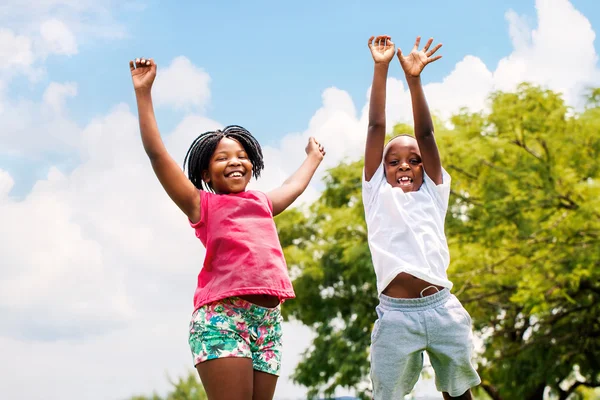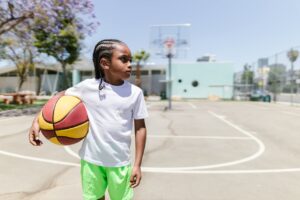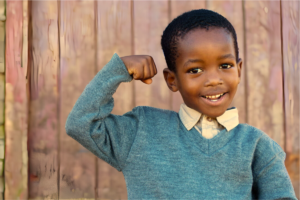Toy Alternatives!
Let me share a personal story that completely transformed my perspective on what children truly need versus what we, as parents, think they need. It was a moment that reshaped my approach to parenting and how I choose toys for my kids. Now, if I buy anything, it’s puzzles, Legos, or books, items that nurture creativity, problem-solving, and a love for learning. More importantly, I encourage them to spend more time outdoors, exploring nature, using their imagination, and engaging in unstructured play, which genuinely enriches their development.
Two years ago, just before the summer holidays, my wife and I took our two daughters to a well-known toy store in our city. We aimed to buy a few new toys to keep them entertained during the break. We carefully selected some of the latest flashy, musical, and “educational” toys, and another interactive one that sang, danced, and even repeated words when you pressed its tummy. Convinced that these toys would accelerate their development, we paid for them and prepared to leave.
But just as we stepped out of the store, my then three-and-a-half-year-old daughter spotted a simple sandpit and a small toy house near the entrance of the toy store. Her face instantly lit up with excitement, and within seconds, she was fully immersed in digging in the sand, running in and out of this tiny toy house, completely captivated. Her one-year-old sister quickly followed, giggling with delight as she joined in.
My wife and I stood there, watching them in awe. A thought struck us: Do our kids really need the expensive toys we just bought? Just moments ago, they had been eager to take them home, yet they found pure joy in the simplest of playthings—a sandpit and a tiny toy house.
Despite our doubts, we reassured ourselves that the fancy new toys were a good investment. But weeks before the summer break had begun, we realized how wrong we were. Those once-exciting toys ended up at the bottom of their toy box, barely touched and soon forgotten. Meanwhile, our daughters spend hours exploring kitchen cabinets, rummaging through wardrobes, pulling shoes off the rack, playing with grass and stones in the garden, and pretending to cook with everyday household items.
That experience was a wake-up call. It showed me that children don’t need more toys; they need real experiences—things that spark their imagination, encourage exploration, and allow them to engage with the world around them.
That was my first real wake-up call. Despite this realization, I continued buying expensive toys, convinced they were essential for my children’s growth and happiness. But time and time again, I noticed the same pattern—after the initial excitement wore off, the toys were abandoned. What truly captivated them wasn’t something bought from a store but the real world. They found endless joy in ransacking through kitchen cabinets, feeling the cool grass between their fingers, and engaging in the simplest conversations with my wife and me.
This realization led me down a fascinating path of research and observation, revealing six fundamental things that shape healthy child development. These weren’t things that could be wrapped in shiny packaging or pulled off a store shelf. Instead, they were experiences—meaningful interactions that lay the foundation for lifelong learning, creativity, and emotional well-being.
Yet, as parents, we find ourselves trapped in an exhausting and endless cycle of buying more and more toys and gadgets. We pour money into toys our kids don’t honestly want or need, believing that more stuff somehow equates to better parenting. But what if we’re missing the bigger picture?
Research consistently shows that children with fewer, high-quality toys tend to play more creatively, develop stronger problem-solving skills, and show greater independence. It’s not about the quantity of possessions but the quality of experiences we provide. This became crystal clear to me through my parenting journey.
The truth is, a child’s happiness and development don’t hinge on having the latest gadgets or the most expensive playthings. What they truly need are simple, meaningful experiences—moments that shape their understanding of the world, nurture their imagination, and strengthen their bonds with family.
And the best part? None of it costs a thing.
Yet, we live in a world where toy companies rake in $80 billion annually, preying on our fears and aspirations. They convince us that if our children don’t have the latest “educational” gadget, they’ll somehow fall behind. But the reality is that an overabundance of toys leads to clutter, overstimulation, and a diminished appreciation for what they already have.
Dr. Sarah Miller, a child psychologist at Stanford University, noted, “We’re seeing a correlation between toy overload and decreased attention spans in young children.”
So, Parents, it’s time to pause and rethink. Let’s stop buying into the myth that more is better. Instead, let’s focus on giving our kids what they truly need—the gift of meaningful experiences, real-world exploration, and our undivided presence.

Let’s explore what children really need to thrive, supported by research and expert insights, plus practical ways to implement these things across different living situations and age groups.
1. Fresh Air and Physical Movement
Research Evidence: A 2022 study in the International Journal of Environmental Research found that children who spend at least 2 hours outdoors daily show improved cognitive development and better sleep patterns.
How to Implement:
- Urban Families: Visit parks with your children, participate in community garden projects, or create a small balcony nature space.
- Suburban/Rural: Establish daily outdoor exploration times in backyards, gardens, or nearby natural areas.
- Apartment Living: Do Indoor movement games, window gardening, and scheduled park visits with your children.
Age-Specific Activities:
- Toddlers (1-3): Supervised nature touching and leaf collecting.
- Preschoolers (3-5): Engage in simple obstacle courses and nature scavenger hunts.
- School-Age (6+): Encourage them to do tree climbing, nature photography, and garden projects.
2. Unstructured Play Time
Expert Insight: “Unstructured play is the work of childhood,” says Dr. Michael Thompson, pediatric psychologist. “It’s how children learn to solve problems, regulate emotions, and develop creativity.”
Implementation Strategies:
- Set aside “free play blocks” in daily schedules.
- Create safe play spaces that don’t require constant supervision.
- Rotate minimal toys instead of maintaining large collections.
Screen-Free Alternatives:
- Create simple obstacle courses with household items.
- Set up a basic art station with recyclable materials
- Designate a “loose parts” play area with safe, natural materials
3. Emotional Security and Unconditional Love
Research Evidence: The American Academy of Pediatrics reports that consistent emotional support in childhood leads to better stress management and more substantial relationship skills in adulthood.
Practical Applications:
- Practice active listening during daily activities.
- Maintain consistent routines for security.
- Respond supportively to both successes and failures.
Age-Appropriate Connection Activities:
- Toddlers: Regular cuddle times and responsive caregiving.
- Preschoolers: Special one-on-one time and emotion-naming games.
- School-Age: Daily check-ins and shared journaling.
4. Freedom to Experiment
Scientific Basis: Research from MIT’s Early Childhood Cognition Lab shows that children learn best through self-directed experimentation.
Safe Experimentation Spaces:
- Kitchen science area for simple experiments
- Designated “tinkering space” with safe tools
- Nature exploration kit for outdoor investigations
Guided Discovery Ideas by Age:
- Ages 2-3: Water play stations and sand exploration.
- Ages 4-5: Simple building challenges and weather watching.
- Ages 6+: Basic engineering projects and nature journals.
5. Connection with Nature
Research Impact: Children & Nature Network studies show that regular nature interaction improves attention span, reduces stress, and enhances learning readiness.
Urban vs. Rural Solutions:
- Urban: Window herb gardens, nature artwork, park visits
- Suburban: Backyard wildlife watching, garden patches
- Rural: Forest exploration, farm connections
Nature Connection Ideas:
- Create nature treasure boxes
- Start weather-tracking journals
- Build simple bird-feeding stations
6. Quality Attention and Presence
Expert Perspective: Dr. Laura Markham of Aha! Parenting emphasizes: “In our research, 15 minutes of focused attention several times a day proves more beneficial than longer periods of distracted interaction.”
Practical Implementation:
- Schedule short, focused play sessions
- Create device-free zones and times
- Practice mindful daily routines together
Quality Time Solutions for Busy Parents:
- Morning connection routines (5-10 minutes)
- Bedtime bonding rituals
- Weekly special time appointments
Making the Transition (Toy Alternatives): From Toy Overload to Enriched Environment
1. Start with a Toy Audit:
- Remove broken or unused items
- Create a rotation system
- Donate the excess to community organizations
2. Set Up Activity Zones:
- Reading Corner
- Creation station
- Building area
- Nature investigation spot
3. Establish New Routines:
- Morning outdoor time
- Afternoon quiet play
- Evening family connection
Troubleshooting Common Challenges
1. “But my child wants every new toy!”
Solution: Create a wish list system, teach delayed gratification
2. “We live in a small space!”
Solution: Focus on versatile items, use vertical space, and rotate activities
3. “Bad weather limits outdoor time!”
Solution: Indoor movement games, nature-watching stations, covered outdoor spaces
Conclusion: Evidence-Based Action Steps
- Start with one change: Choose one area (like outdoor time) to focus on first.
- Track progress: Keep a simple journal of changes and observations.
- Adjust based on your family’s needs: What works for one may not work for all.
- Connect with the community: Find or create local nature play and activities groups.
Remember: The goal isn’t perfection but progress toward a more enriching childhood environment.
Let us know in the comment section what you will be doing differently.






